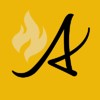
The wildfire danger across the Rocky Mountain House Forest Area remains low.
However, wildfires can still occur during the winter months, it is important to always keep proper firefighting equipment nearby when burning. Never leave your cooking or warming fire unattended, and always make sure to fully extinguish it. Soak the ashes, stir them, and soak them again until they are cool to the touch.
Even small fires that aren’t properly extinguished can smolder beneath the surface and potentially reignite in the spring, causing a wildfire.
If you see smoke or flames in the forest and suspect it may be a wildfire, report it to 310-FIRE.
JOIN THE 2025 WILDFIRE TEAM
Are you interested in joining the Alberta Wildfire team this summer? We have a variety of positions available now, with more openings to come in the next few weeks. Visit our website to learn more and apply.

ROCKY MOUNTAIN HOUSE WILDFIRE UPDATE
Since January 1, 2025 there have been no wildfires in the Rocky Mountain House Forest Area.
2024 WILDFIRE STATISTICS
The below graphic is a summary of the 2024 wildfire season, for the entirety of the Forest Protection Area of Alberta.

WINTER BURNING
From November 1 to February 28 fire permits are not required for burning in the Forest Protection Area of Alberta. However, you are still responsible for any fires you ignite during this time. Learn about safe burning practices on our website.
Refrain from burning when an inversion is in place or is forecasted.
Before lighting any large winter burning projects near communities or roads, consult your local municipality for safety guidelines.
Actively manage burn projects to reduce total burning time.
Burn debris in stages so that you can adapt to changing weather conditions and reduce smoke.
Don’t burn until you have good snow cover in the area (more than 15 cm).
If you're doing large-scale burning, consider contacting the Rocky Mountain Forest Area office at 403-845-8250. This helps us track burning activities, but is not required.

SMOKE INVERSIONS
An inversion happens when cold air is trapped near the ground by warmer air. This traps smoke from winter burning close to the ground, making it hard for the smoke to rise and mix.
Smoke inversions can reduce visibility, create dangerous driving conditions, and affect people with smoke related health concerns.
If you are planning a burn check the forecast and do not burn when an inversion is expected.
403-418-5023
